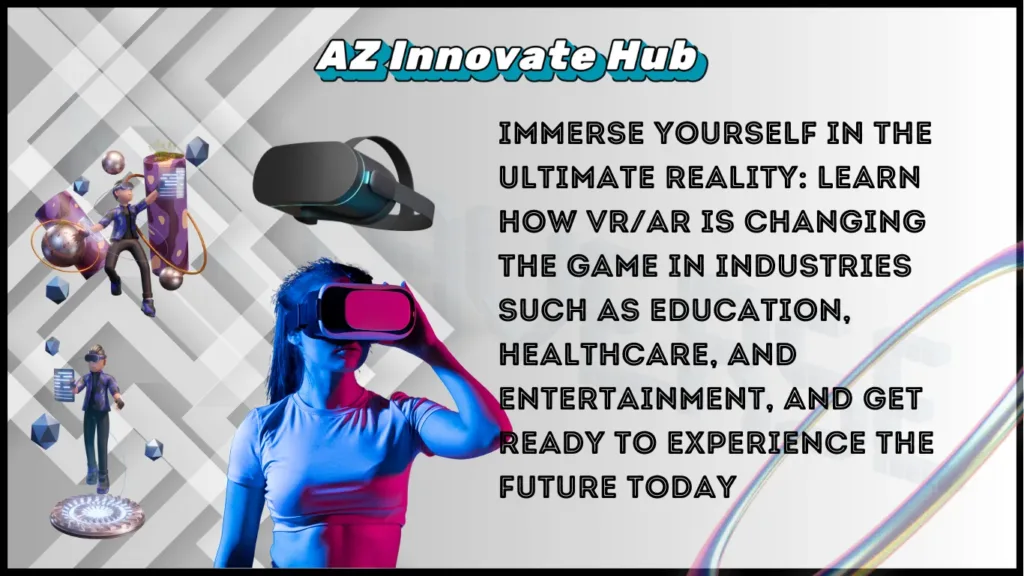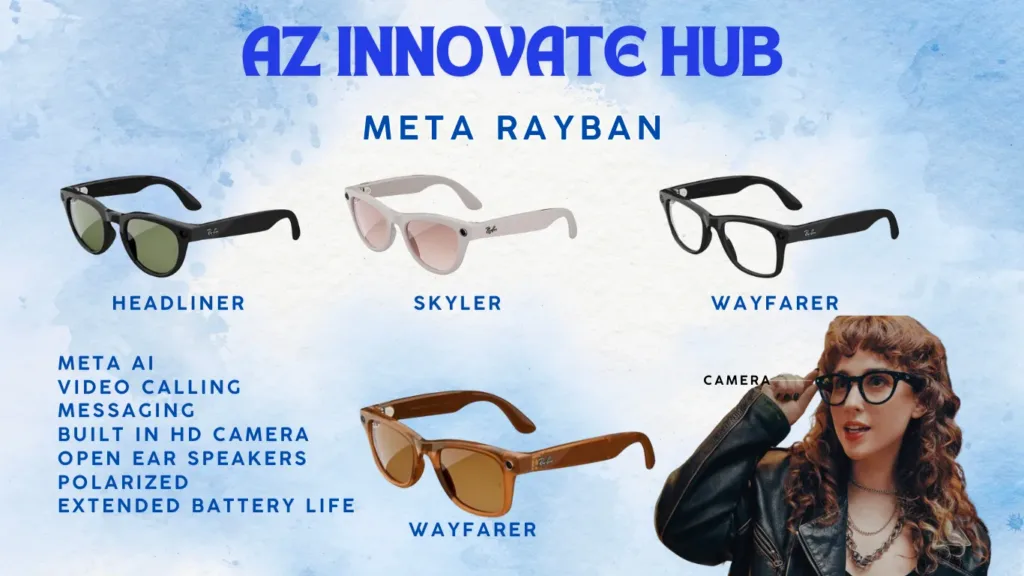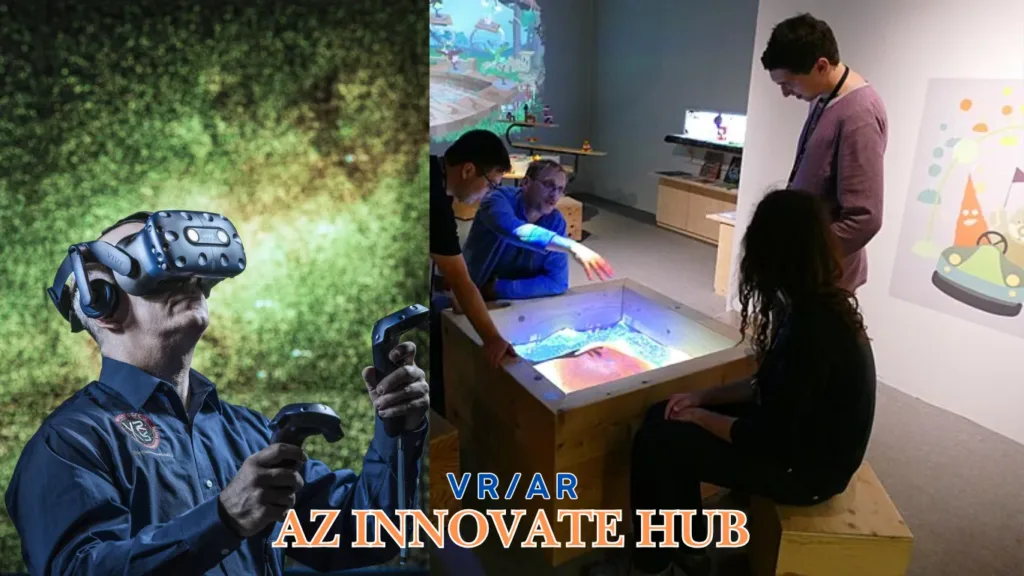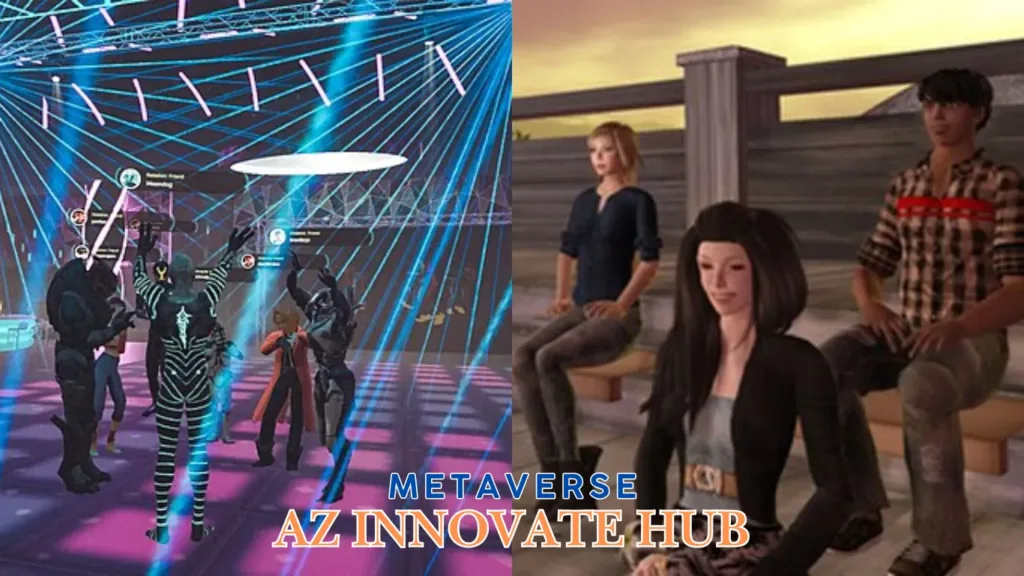
Imagine waking up in a world where the lines between reality and the digital realm are increasingly blurred. You could attend a virtual concert headlined by your favorite artist in a hyper-realistic digital replica of the Roman Colosseum, collaborate with colleagues from across the globe in a shared virtual workspace, or unwind by exploring a vibrant digital world teeming with fantastical creatures. Welcome to the Metaverse, a collective virtual shared space where augmented reality (AR) and virtual reality (VR) are redefining human interaction, work and entertainment.
The metaverse, a concept long cherished by technologists and futurists, is rapidly becoming a reality. Propelled by cutting-edge advancements in artificial intelligence (AI), blockchain, and VR/AR hardware, it’s more than just a technological curiosity. From sleek, high-resolution headsets that transport users to breathtaking digital worlds to AR glasses overlaying digital information on physical surroundings, these innovations form the building blocks of an emerging digital universe. But what role do these devices play in shaping this virtual frontier? How will they overcome challenges like accessibility, privacy, and addiction while unlocking transformative opportunities in education, industry, and entertainment?
Disclaimer: This website contain affiliate links, which means we may earn a commission if you make a purchase through one of these links. However, this does not influence our editorial content or product recommendations.

The Building Blocks of the Metaverse: VR/AR Hardware
High-Fidelity VR: Immersive Virtual Worlds
Virtual reality headsets serve as gateways to immersive metaverse experiences. Current-generation devices boast:
- Visual Fidelity: Resolutions exceeding 2000 x 2000 pixels per eye, refresh rates above 90Hz, and expanded fields of view rival human peripheral vision.
- Spatial Audio: Head-Related Transfer Function (HRTF) algorithms deliver realistic 3D soundscapes.
- Advanced Haptics: Haptic suits and gloves simulate tactile sensations, such as texture and impact.
Emerging technologies, like foveated rendering enabled by eye tracking, optimize performance by focusing processing power on the user’s line of sight. Wireless VR devices, such as the Meta Quest Pro, further enhance mobility and immersion with advanced Wi-Fi standards (Wi-Fi 6E).
Augmented Reality: Blending Digital and Physical Worlds
AR glasses overlay digital elements on the real world, transforming daily activities. Innovations include:
- Waveguide Displays: Compact designs with wider fields of view and enhanced brightness.
- Enhanced Computer Vision: Algorithms enabling precise object recognition and virtual object placement.
Applications range from navigation and remote assistance to gaming and interactive social experiences, where improved environmental understanding and natural communication are central.
Peripherals: Expanding Interaction
Beyond headsets, peripherals elevate immersion:
- Controllers: Sophisticated hand-tracking and gesture recognition.
- Motion Capture Systems: Affordable, precise systems enabling full-body interactions.
- Haptic Devices: Suits and gloves offering realistic tactile feedback.
Get Started with the Metaverse: Recommended VR/AR Gears

In this section, you can list and briefly describe various products available on Amazon, with affiliate links.
Best VR Headsets:
- Transform your reality with Meta Quest 3S, featuring mixed reality, immersive gaming, and multi-tasking capabilities. Get Batman: Arkham Shadow and a 3-month Meta Quest+ trial (a $70 value) with purchase.
- Meta Quest 3s 128GB @ $299.00
- Meta Quest 3s 512GB @ $499.99
- Experience immersive gaming with PlayStation VR2, featuring eye tracking, 3D Audio, and stunning 4K HDR visuals. Get yours today for $349.99!
- next-level gaming and immersive entertainment with Oculus Quest 2, featuring a blazing-fast processor and stunning high-resolution display. Get yours today with 256GB storage and a cleaning cloth bundle for $525.
Top AR Glasses:
- Meta Ray-Ban: All Models
- Skyler – Get yours today at $299
- Headliner – Click here to purchase.
- Wayfarer – Click here to purchase.
- Rokid AR Joy Pack AR Glasses – Click here to purchase
- RAYNEO Air 2s AR/XR Glasses – Click here to purchase.
- VITURE Pro XR/AR Glasses – Click here to purchase
Peripherals: Expanding Interaction
Artificial Intelligence: Intelligent Virtual Worlds
AI drives the metaverse’s intelligence and adaptability:
- Realistic Avatars: Digital humans exhibit nuanced expressions and behavior.
- Dynamic Environments: AI-generated, real-time interactive worlds.
- Personalized Experiences: Tailored content and adaptive difficulty levels enhance engagement.
Next-Generation Connectivity: Seamless Interactions
High-speed networks like 5G and emerging 6G ensure minimal latency and high bandwidth, crucial for real-time interactions. Innovations include:
- Edge Computing: Reducing latency by processing data closer to users.
- Network Slicing: Dedicated segments for specific applications.
Global satellite constellations expand connectivity, ensuring accessibility in remote areas.
Nanotechnology: Revolutionizing Hardware

Nanotechnology enhances VR/AR devices by enabling:
- Advanced Displays: Quantum dots and microLEDs offer superior resolution and energy efficiency.
- Precise Sensors: Nano-sensors improve motion tracking and biometric accuracy.
- Durable Materials: Lightweight, strong components increase comfort and portability.
Challenges and Opportunities
- Physiological Concerns: Motion sickness, eye strain, and ergonomic discomfort persist.
- Technological Limitations: Energy consumption, heat dissipation, and bandwidth demands remain hurdles.
- Privacy and Security: Biometric data and spatial tracking require robust safeguards.
- Accessibility: Inclusive design for diverse physical and cognitive abilities is crucial.
Opportunities
- Entertainment and Social Interaction: Virtual concerts, gaming, and community spaces revolutionize engagement.
- Education and Training: Immersive simulations for medicine, aviation, and remote learning redefine skill-building.
- Industry Transformation: AR/VR applications in manufacturing, healthcare, and retail drive efficiency and innovation.
- Empowered Accessibility: Virtual environments provide unique opportunities for individuals with disabilities.

The Future of the Metaverse
The metaverse is a technological and cultural evolution. AI, 5G/6G, and nanotechnology will converge to push the boundaries of VR/AR innovation, shaping industries, education, and entertainment. Collaborative efforts between technologists, policymakers, and ethicists are vital to ensure responsible development.
From climate simulations to virtual training for sustainable practices, the metaverse offers unprecedented opportunities. Its future is a journey of discovery, redefining human potential, fostering inclusivity, and building innovative realities. As technology and imagination unite, the metaverse becomes not a destination but a transformative force for generations to come.

